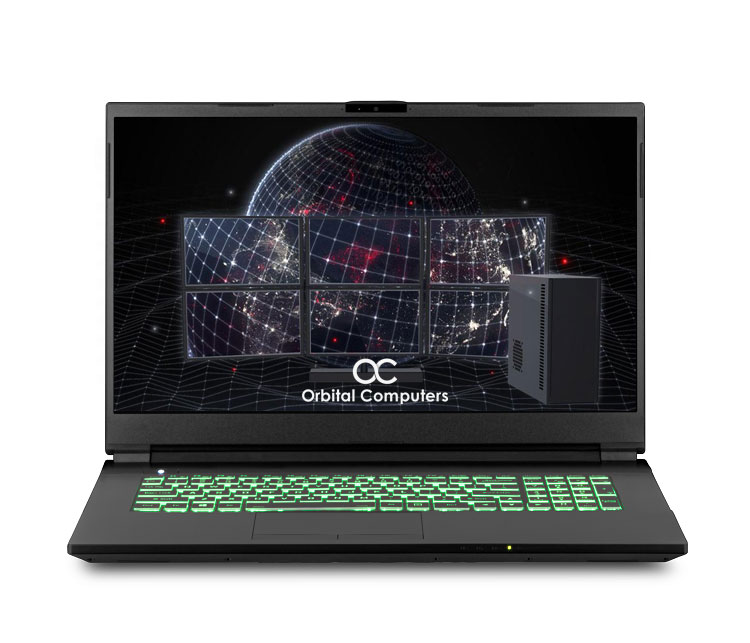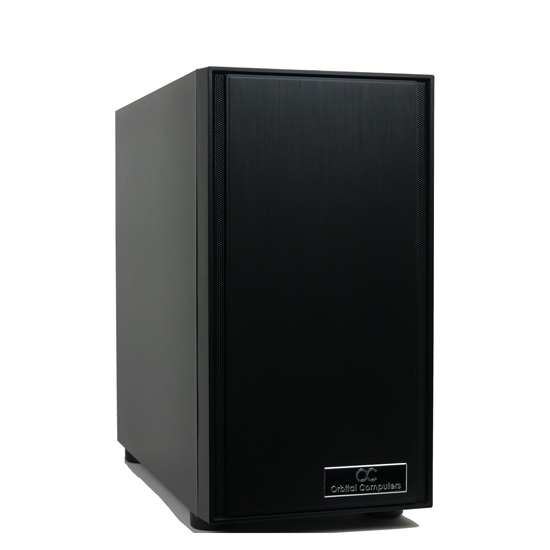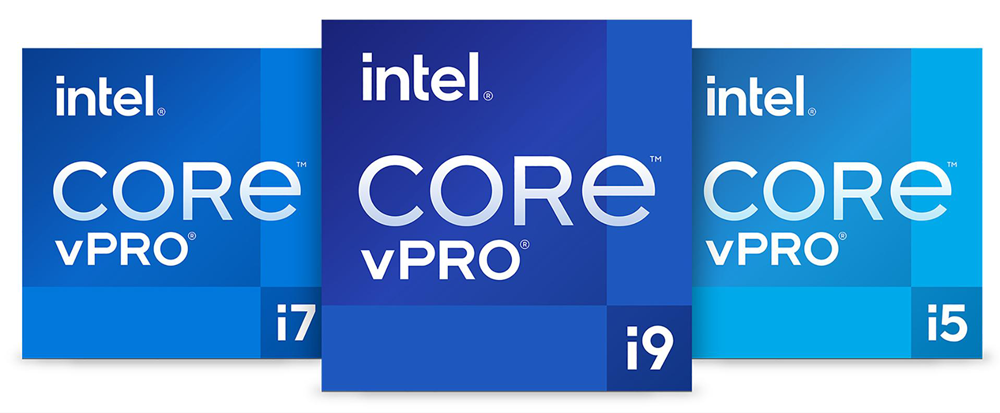Introduction to Trading Computer CPU Optimization
As a leading manufacturer of Trading Computers since 2013, Orbital Computers is no stranger to obsessing over how to maximize the performance of our systems with trading platforms. In this brief post, I’m going to highlight several critical factors that you should consider when choosing a CPU for your trading computer. These recommendations are based off of our own internal testing with the most popular desktop-based trading platforms available today and are designed to maximize processing and order execution speed while minimizing latency for the majority of traders – whether you’re trading one futures contract or hundreds of thousands of shares at a time. Bottom line: the way to maximize trading computer performance is to choose the CPU with the highest single-thread performance. In the rest of this post, we’ll cover all the nuances that come with that statement.
What does a CPU Do, exactly?
In simple terms, you can think of the CPU – the Central Processing Unit – as the ‘brain’ of your computer. It’s the component that performs the majority of the heavy duty calculations that runs your programs and takes the raw data sent to your computer from the exchange and processes it into information that you can see and act upon. When you click the ‘buy’ or ‘sell’ a stock, the CPU is what processes that information, crunches the numbers, and sends it over the internet to be processes by the exchange. The quicker that whole process occurs, the higher up in the queue your order sits for execution (all else being equal). When it comes to high speed scalping-type trading, you would generally want your orders to get to the front of the line as fast as is reasonably possible, and the CPU is a critical element in accomplishing that goal.
When you look at CPU listings, you’ll see 3 critical specifications. We’ll cover what each specification means, in the context of a trading computer. It’s vital to note that trading platforms cannot make use of unlimited CPU horsepower. It’s important to choose the ‘right’ specs, not just the quantitatively highest specs for your trading computer.
– The number of CPU Cores and Threads
– The GHz value of the CPU
– The generation or architecture of the CPU
Before we go further, a quick analogy will be instructive. Think of your trading platform like a highway, and the data you’re pulling from, and sending across that platform as cars on the freeway. If you’re trying to maximize throughput on that freeway (or minimize backed up traffic), there are two general things you can do – increase the number of lanes on the highway or increase the speed limit.
Increasing Lanes: Think of the number of CPU cores/threads as the number of lanes on the highway and the GHz value as the speed limit of the highway. Trading platforms can make use of ‘multiple lanes’ (i.e. multiple CPU cores/threads) to a moderate extent – in our internal testing, we’ve seen typical trading platforms use about 16 threads for typical trading workloads. In general, core/thread usage increases with the number of charts, monitors, indicators, custom systems, additional programs, and analyses you’re running. Backtesting and strategy development can be its own unique beast that can be heavily multi-threaded, but for most traders, the practical limit is something like 16 threads, as of the writing of this post.
Increasing speed limit:
If we continue on with our analogy of the highway above, what’s the best way to speed up traffic throughput if you’re the only one on the road? In that case, adding more lanes to the freeway (more CPU cores) won’t help – you only need one lane for your car. The way to speed up your throughput on this road now is to increase the speed limit – to increase the speed your car is allowed to drive on that highway. That’s essentially what the GHz value of the CPU is telling you – with some important caveats we will discuss later. That value is telling you the number of cycles or operations the CPU can conduct per second. If the value is 5.2 GHz, that means 5.2 billion (G = Giga = Billion) Cycles per second. That performance figure can be quantified by referring to a benchmark figure that tells you the ‘single thread performance’ of the CPU. These benchmarks are kind of like car horsepower readings from a dynamometer, they tell you how powerful a CPU is on both multi and single thread performance.
For trading use, you want to have the fastest single-thread performance possible, while staying within budget. As of the writing of this post, the best options are the Intel Core i9 12900K, i7 12700K, and i5 12600K, in that order, all available on the Orbital Silenced Trader X2000 here.
Take a look at these recent single-thread benchmark results – the Intel units are at the top of the heap while AMD is quite a ways down the list. The AMD CPUs still have their merits, as their multi-thread performance can be quite impressive, but for purposes of trading, the Intel CPUs are currently in a class of their own. With that said, we do offer both Intel and AMD systems if you have strong preferences either way.

One last important item to note on the topic of CPU specifications is that you cannot directly compare the numbers given between two different CPU brands (16 cores from Intel are not directly equivalent to 16 cores from AMD) and you can’t compare specifications directly from two different generations – 5.2 GHz from a 12th generation Intel CPU is dramatically faster than 5.2 GHz from a 11th Gen Intel. The reasoning there is that as newer generations come online, there are improvements made to the microarchitecture of their chip that provides them with greater efficiency and performance improvements without increasing the cycle speed. A newer CPU can operate at the same clock speed, but thanks to efficiency improvements, can perform more ‘work’ without increasing the speed.
Takeaway: try to maximize the number of cores/threads of the CPU, without sacrificing CPU GHz value. As of the writing of this post, that means the Intel Core i9 12900K is the absolute fastest CPU available for a trading computer, available on the Trader X2000. For a more cost-effective solution, the Intel i7 found on the Trader X1000 would still offer exceptional single-thread performance at a more budget-friendly price point.
As Weird Al might say, ‘It’s all about the GHz, Baby’!
To Overclock, or Not to Overclock – That is the Question
Whether tis nobler to suffer the slings and arrows of sub-maximal clock speed,
or to take arms against a sea of Bluescreens of Death and PC Instability… OK I’ll stop now..
So a few of the more advanced readers among you may have realized there’s a little workaround here. Those Intel K series CPUs are technically ‘unlocked’, meaning Intel allows the end user to go into the BIOS and manually crank up the GHz value on their over, thereby increasing the clock speed: i.e. Overclocking. This is a terrible idea for a trading computer. The problem is multi-fold. Intel in 2022 is shipping these CPUs at the bleeding edge of their performance envelope already, while still offering an incredibly remarkable track record of stability (we see long term Intel CPU failure rates at about 1 per 1000 units). Intel, from the factory, will guarantee the 12900K will operate at up to 5.2GHz max turbo frequency out of the box, with appropriate cooling. In some of the best cases, with more exotic cooling solutions, and with cherrypicked chips, an overclock of 5.3-5.4GHz might be possible on these chips. But the issue is that in order to attain those minor speed gains, it requires a fairly dramatic increase in CPU voltages, which increases the CPU’s heat output and dramatically decreases long term system stability. When people start tinkering with the fine-tuned parameters of these modern Intel CPUs, instability is an almost guaranteed outcome. Usually what happens is the overclock is performed and then tested with some CPU stress tests that run a handful of instructions through the CPU at a high rate. It passes the test and the user puts the PC into service. Then some of their programs throw something unexpected at the CPU that the overclock doesn’t agree with, and the system crashes with a BSOD – this can be really, really bad news in the middle of a trade! At Orbital, the way we design our trading computers is with Stability First. We’ll take 95% of the performance if it means absolutely maxing out long term system reliability because we understand you’re using the system to trade and a failure in that environment can have catastrophic consequences. The risk/reward analysis for overclocking a trading computer CPU skews strongly against overclocking.
Cooling and Power Optimization
A brief note on cooling and power support components. Everything we discussed above about CPU speed and max performance is dependent upon the CPU being fed enough stable power and ensuring that the CPU is cooled off adequately. If the thermal design of the system isn’t tailored properly, the CPU can overheat under heavy use and will start throttling performance down or may even shut off the system entirely. Most modern Intel CPUs are allowed to run up to 100*C before they start Thermal Throttling, which is the process whereby the CPU starts trimming back clock speed and/or CPU core utilization to keep the CPU temps under that 100*C limit. When this occurs, the system will automatically turn down performance in exchange for system stability. If that process went unchecked and the CPU exceeded its thermal limits, it may shut the PC down entirely to prevent damage to the CPU. Thermal Throttling is to be avoided at all costs! This is where Orbital’s trading computers really set themselves apart from the competition because we include an exceptionally well-engineered cooling system on our trading PCs like the X2000. In this system, starting from the Fractal case with hydraulic ball bearing case fans that bring in filtered fresh intake air and exhaust the warm air, the magic happens with the CPU cooler. There are a few options but our general top of the line recommendation is the Noctua dual-fan CPU cooler. This is a large surface area metal heatsink that is directly attached to the outside of the CPU. On the front and rear of that heatsink are attached two high static pressure fans from Noctua which are almost unanimously considered the leader in ultra-high performance PC fan development. The fans are configured in a push-pull configuration: one fan on the front of the heatsink pushes air through the fins and the other fan on the back of the heatsink pulls air through, increasing the volume and velocity of the airflow over the heatsink fins. The fans operate nearly inaudibly and are the most reliable component we’ve ever sold: in almost 10 years of using Noctua fans we don’t have a single report of a failure from any customer. Not one failure. Not bad for reliability! Notwithstanding that 100% reliability track record, that setup does still have redundancy built in. If one of the fans were to fail, the other fan is still able to handle the cooling requirements of the system and can compensate for the failed unit.
We strongly prefer these highend Noctua air coolers over water coolers for the majority of traders as they offer nearly identical cooling performance on the 12900K CPU, operate quieter, and are infinitely more reliable as the only move parts on the air cooler are the two fans (with a 100% reliability record in our experience) whereas the water cooler has a water pump, hoses, a radiator, ancillary power, and still has fans on top of those other potential points of failure. The Corsair water coolers that we offer are the most reliable we’ve seen, but in the situations where the extra thermal capacity of a water cooler isn’t strictly required, the Noctua air coolers are the better choice for most traders.
Well, that was a long-winded way of saying, the optimal CPU for trading computers is one with the highest single-thread performance and one that is cooled and powered properly to ensure stable operation. If you’re in the market for a new trading PC, give us a call to discuss your needs at 877-976-7510 or select one below to configure your new Trading PC.
Configure Your Orbital Trading Computer
Orbital MW-1000
Extremely impressive mobile workstation with Intel Core i9 14900HX CPU. Top of the line single and multi-threaded performance make the MW1000 ideal for light to heavy 3D CAD and trading workloads.
Solid laptop workstations optimized for AutoCAD, Revit, Solidworks, Sketchup, Mastercam, TradeStation, TOS, Cubase, Pro Tools and many others. Loaded with Nvidia Studio GPU Drivers for max stability.

From: $2,123.00
- Intel Core i9 14900HX CPU
- 24 Cores, 32 Threads, 5.8GHz CPU
- Nvidia GPU - Up to RTX 4090
- Up to 96GB DDR5 RAM
- Configurable With Thunderbolt 4
Silenced X2000
Silence Optimized trading PC with up to Intel Core i9 14900KF CPU at 6.00 GHz.
Fastest single-threaded performance and solid multi-threaded capabilities make the X2000 the ideal trading PC for most traders.

From: $2,020.00
- Up to Intel Core i9 14900KF
- Up to 24 Cores, 32 Threads, 6.0GHz²
- Up to 12 Monitors
- Up to 128GB RAM
X1000 Bundle
Full Trading PC Bundle Deal! Four 1920x1080p HD Monitors + Quad-Stand Included.
Full package trading system including our powerful Trader X1000 trading PC, four Full HD monitors, and multi-monitor stand.

$2,251.00
- 14th Gen Intel Core i7 CPU Standard
- 20 Cores, 28 Threads, 5.40 GHz Turbo
- 4-Monitor Array Included
- 4x 24" Full HD Monitors
Trader X1000
Highly recommended computer for most traders. Best Bang-For-Buck. Fast and reliable.
Best PC for most traders of stocks, futures, forex, options, and more. Optimized for lightning fast order execution & massive data processing.

$999.00
- 14th Gen Intel Core i5/i7
- Up To 20 Cores, 28 Threads, 5.4GHz*
- 3 Monitor Support Standard
- 16GB DDR4 RAM Standard

